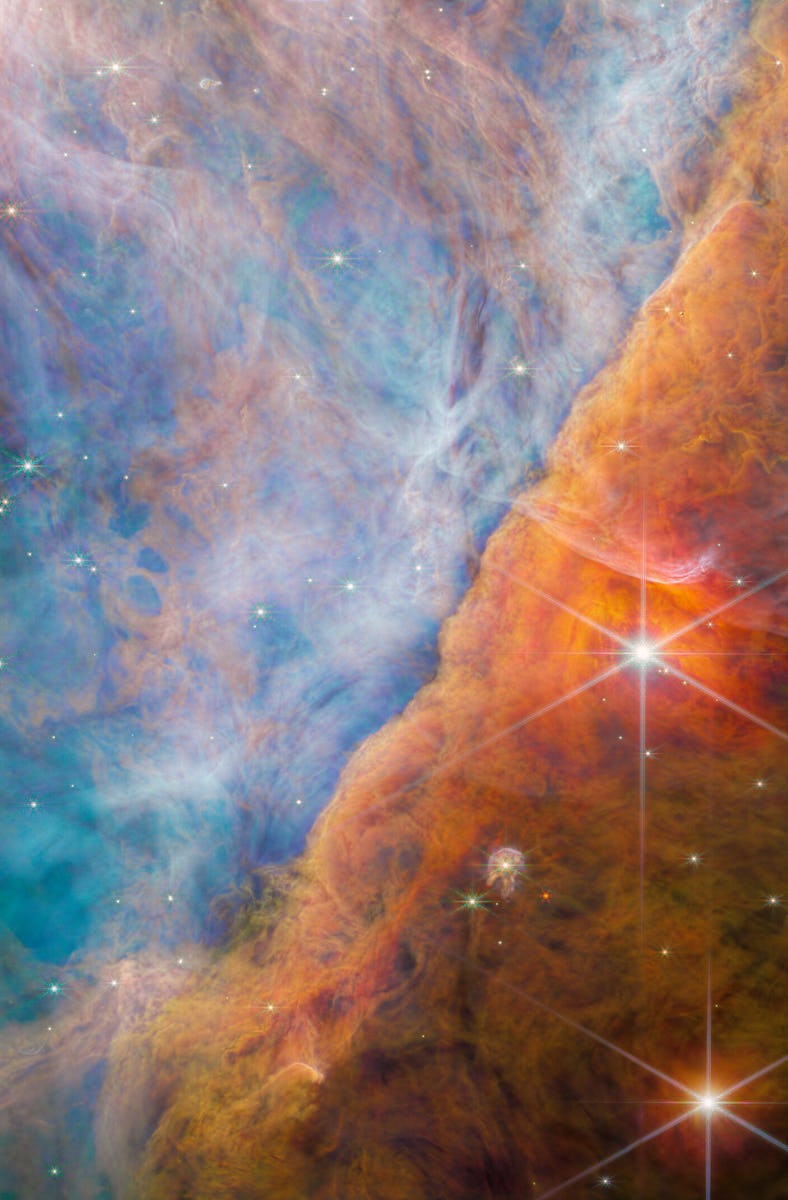Webb Telescope Discovers a Molecule Critical for Life in the Orion Nebula
These views are thanks to the spacecraft’s frigid location one million miles away from Earth.

Scientists with the James Webb Space Telescope (JWST) are thrilled as the sensitive telescope has detected a special molecule for the first time.
The Orion Nebula is a beloved object of the night sky. In addition to being a beautiful region to admire, it’s also packed with science about our origins. Using JWST’s penetrating capabilities, astronomers picked up a signal for methyl cation (CH3+) within the Orion Nebula. CH3+ might play an important role in creating carbon-based molecules, the building blocks of all known life.
On Monday, JWST officials from NASA and the European Space Agency (ESA) published several dazzling images from the telescope’s survey of the Orion Nebula.
Orion’s secrets
The Orion Nebula, located about 1,350 light-years from Earth, is a daycare of fledgling stars.
The Orion Bar region. Denser, cloudier material crosses diagonally at the bottom right of this image.
Sometimes, it gets crowded and rambunctious. With JWST, astronomers focused on a dynamic corner called the Orion Bar. In this place, newborn and young stars release high-ultraviolet light that comes across dense clouds of material, and slams into them. This erodes the Orion Bar, and warps the chemistry of the baby stars’ protoplanetary disks, where material sloshes around and may eventually form planets.
One of these disks, called d203-506, orbits a star only about a tenth of the Sun’s mass. Young, hot, massive stars bombard it with ultraviolet radiation, giving d203-506 an extended shape. Meteorites suggest the Solar System had a similar experience. An ancient, massive star may have burned brightly and died fast, but doused the Sun and the building blocks of our planets with radiation before perishing.
The frigid orbit JWST takes around Earth about a million miles away means the telescope can detect new molecules. And within the protoplanetary disk, JWST detected a signal for CH3+. This molecule is simple, but has a fascinating property: It can initiate the growth of more complex carbon-based molecules.
JWST officials write that CH3+ is “significant enough that it has been theorized to be the cornerstone of interstellar organic chemistry, yet until now it has never been detected.”
The Orion Bar region, but with a zoomed-in view of the protoplanetary disk system d203-506.
The JWST survey
To make this discovery, the international team of researchers relied on two JWST instruments: the Mid-Infrared Instrument (MIRI) and the Near-Infrared Camera (NIRCam). According to NASA and ESA, this work required a partnership between astronomers and laboratory spectroscopists. (Spectroscopy is the analysis of light to see what material is present there.)
The work is part of a JWST Early Release Science program called PDRs4ALL.
The telescope will reach a special milestone in July — the one-year anniversary of when the first public data from JWST became public and stunned the world.